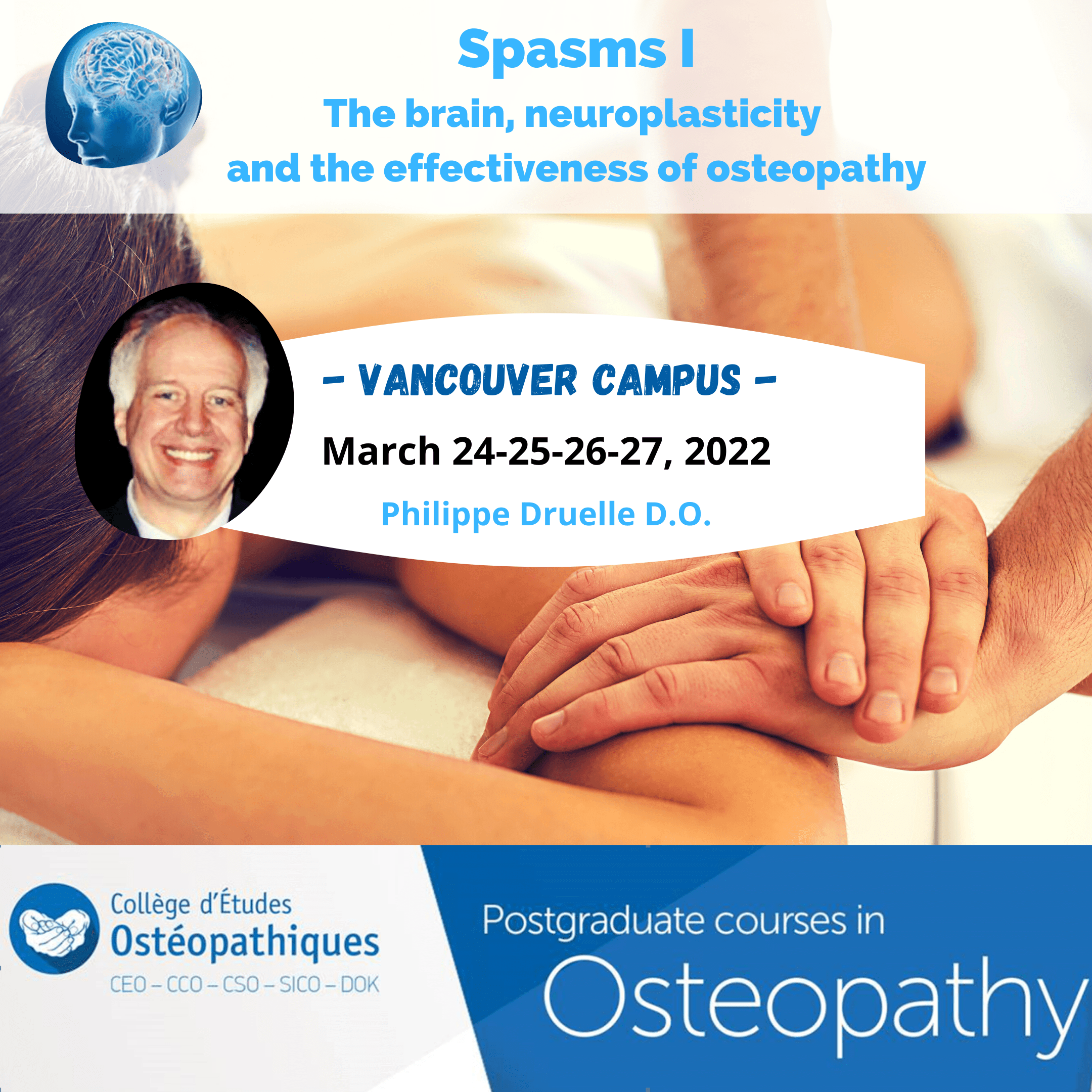The brain, neuroplasticity and the effectiveness of osteopathy
Endocranial spasms, stage I
Brain dysfunctions following concussions and head trauma. Physical imprints in the tissue matrix. Improvement of brain dynamics and ventricular activity following a traumatic, vascular or toxic lesion.
PRESENTATION
This seminar is very popular each year, as it allows participants to directly modify cranial and spinal dynamics allowing for better health functions both physically and behaviorally.
Philippe Druelle, D.O., founder of this approach, is internationally recognized for his work in Osteopathy and for the techniques he has developed since 1982 to increase the systemic activity of the brain, the dynamics of the lateral ventricles and the limbic system and the thalamus with the 3rd ventricle, the corpus callosum, the brainstem, the insula, the free flow of fluids and energies as well as the vascular dynamics in the brain and the medulla.
We have added the Vagus Nerve Self-Regulation System to the program which will continue in the other courses as well as target organ care.
It will teach methods of assessment and normalization of the nervous and ventricular system of patients who have sequelae of physical, vascular or stress trauma.
This workshop is exciting because it allows us to interact with the different parts of the nervous system in a precise, rational and efficient manner. The most important thing is to provide care that is adapted to the severity of the case and the injuries that occurred prior to the traumatic shock.
This workshop focuses on methodology and clinical applications to facilitate the integration of this program into daily practice. Part of this teaching will also address physical and emotional imprints, the notion of anchoring described by Philippe Druelle and how to normalize them. The relationship between tissue memory and true nature will also be taught in the second class with Philippe Druelle on the aftermath of emotional shocks.
PROGRAM
Brain normality and the laws governing good neuronal plasticity. Definition and description of the five different types of endocranial spasms (traumatic, emotional, clinical applications for infants, young children and adolescents (neuro-functional, cognitive, behavioral disorders), transgenerational and civilization).
Palpatory learning to dialogue at the tissue level with the encephalon, the medulla and the ventricular apparatus. Palpatory distinction between the protocols of palpation I, II, III for the solid, liquid and vibratory aspect of the matter. Validation by experienced osteopaths.
Appreciation and methods of volumetric recovery of the medulla, cerebral hemispheres, each lobe, the brain stem, the corpus callosum and the internal capsule associated with the systemic activity of the brain. Work of the lateral ventricles, the 3rd ventricle and the thalamus, etc. Relationship with the central chain and clinical methodology to relieve target areas in the physiology.
Learning and validation of the participant's ability to dialogue with spasms of traumatic, vascular and toxic origin (stage 1).
Prerequisites :
5th year completed and up
How to sign up? :
Registration: (two different options)
-By phone at (514) 700-0749 ext 242 with credit card payments
-Go online:
-https://osteocontinuingeducation.com/ with PayPal
